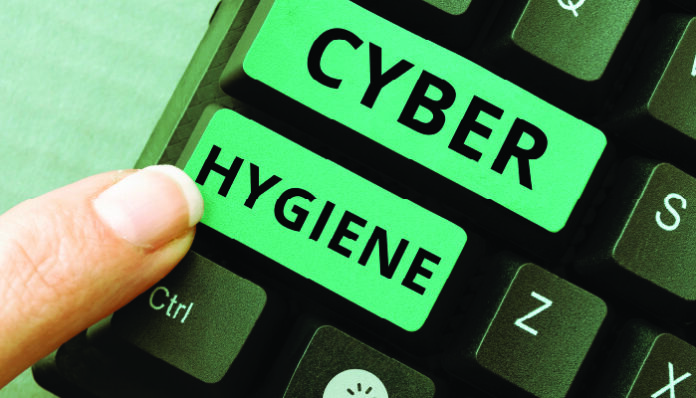The CISOs need to identify all the potential cybersecurity threats and develop a resilient plan to keep their IT infrastructure secure.
There has been a surge in cybersecurity attacks since the global workforce started working from home. An Accenture report titled “State of cyber security resilience 2021” highlights that security attacks increased by 31% from 2020 to 2021. The average number of cyber attacks per organization hiked from 260 to 270 over the year. The Chief Information Security Officers (CISOs) must address all the new IT security challenges efficiently.
Let’s dive deep into the best cyber hygiene practices enterprises implement to keep their IT network secure.
Virtual Private Networks will save the day
Businesses need to incorporate VPNs for workers to access the networks. Because VPN plays a crucial role in enhancing the user’s online privacy, it is an efficient way to encrypt the internet traffic because it makes it challenging for malicious threats to interpret it.
The CISOs should ensure the workforce accesses the company network through the VPN. A resilient VPN will prevent organizations from ransomware attacks that benefit from compromised systems using public networks. A full-blown ransomware attack will harm the brand image and drain the organization’s assets. In fact, according to “IDC’s report, “2021 ransomware study,” 37% of all the global organizations stated that they were victims of some ransomware attack in 2021.
Deploying resilient firewall systems
Firewalls are the resilient line of defense that stops threats from entering the IT infrastructure. It acts as a perfect barrier between employees’ devices and the internet by closing ports to communication. Hence, the CISOs are implementing firewalls to prevent malicious actors from entering their business network. This approach will assist them in stopping the data leakage from the employee’s system.
Preventing zero-day vulnerability attacks
Cybercriminals are benefiting from new, unpatched, hybrid-work-related vulnerabilities. CISOs should patch the target surface areas to prevent such attacks on the IT infrastructure. Implementing a web application firewall (WAF) on the network edge will be one of the effective ways to protect from zero-day vulnerabilities.
Employee training on identifying Phishing attacks
Educating the workforce on how to spot phishing attacks and how to tackle them is essential. Furthermore, they must be aware of other cyber-attacks that are a potential risk due to hybrid or remote access to the organization’s IT infrastructure.
The CISOs must warn and remind the employees about malicious emails from suspicious accounts. The organization should warn the workforce about not opening links or files from unauthorized sources.
Enable multi-factor authentication
Before allowing the workforce to work remotely, the CISOs should implement a Multi-factor authentication policy or 2-factor authentication (MFA or 2FA) wherever possible. It is one of the most effective ways to prevent most credential-based attacks.
Depending on the severity of the data, enterprises can adapt to email or text confirmations; or a biometric scan like facial recognition or fingerprint scan to access the servers or applications.
Restrict Administrative Privileges
If the cybercriminals get access to the administrative privilege credentials, the attacker moves through the entire IT environment effortlessly. SecOps teams cannot provide security by a single solution or measure in isolation. The exposure of credentials of privileged accounts can expose businesses to significant cyber threats.
CISOs should vigilantly evaluate the need to grant access to privileged rights and the validity duration and implement MFAs while managing privileged access.
Moreover, organizations need to revoke the privileged access right once they are no longer required. SecOps teams must regularly evaluate the privileged account rights and make real-time strategic changes to ensure a secure IT infrastructure.
Also Read: Best Ways to Minimize SIEM False Positives
Zero Trust Architecture
Zero Trust is one of the best cyber hygiene practices businesses can embrace to secure their organization from sophisticated cyberattacks. Zero trust architecture is an effective cybersecurity strategy because it eliminates implicit Trust and constantly validates the users at each stage of digital interaction.
Never trust, always verify is the foundation of a zero-trust approach designed to secure modern IT infrastructures. Embracing this cyber hygiene strategy allows businesses to successfully digitally transform by utilizing rigorous authentication methods, network segmentation, and avoiding lateral movement.
Moreover, businesses can get layer seven threat protection, streamline granularity, and enforce a least access policy. Industry veterans developed a zero trust approach because the traditional security models have become obsolete as it considered everything registered inside the network to have implicit Trust.
Once the network, users, and devices are registered on the IT infrastructure, they have an implicit trust which enables them to move laterally in the IT environment to get access and extract sensitive information because the cybersecurity tech stack does not have granular security controls.
CISOs and SecOps teams can consider these top 7 cyber hygiene practices to strengthen their security posture.
For more such updates follow us on Google News ITsecuritywire News. Please subscribe to our Newsletter for more updates.









